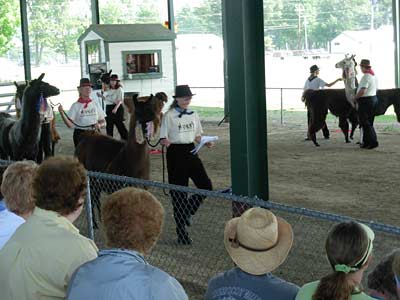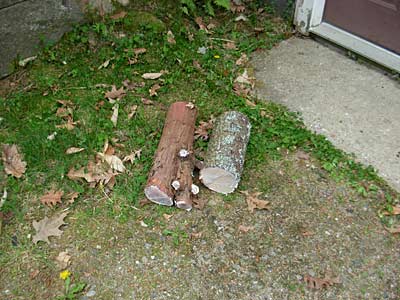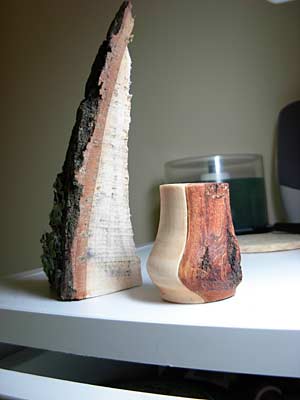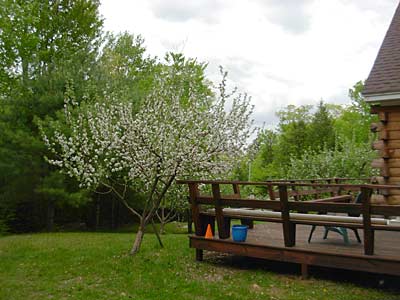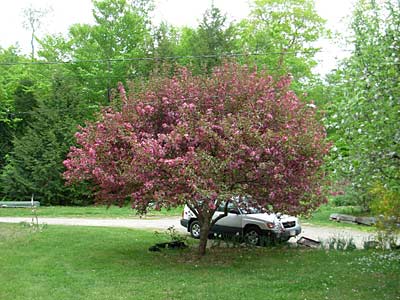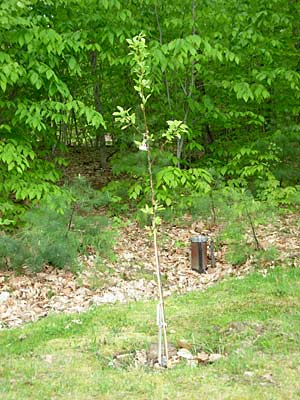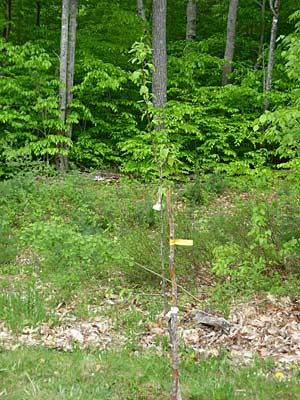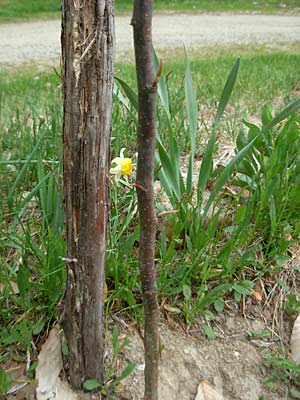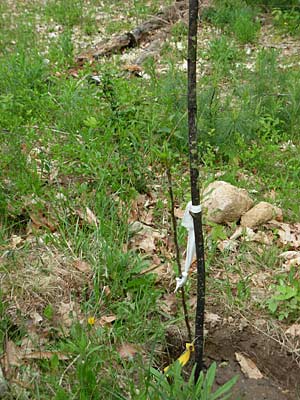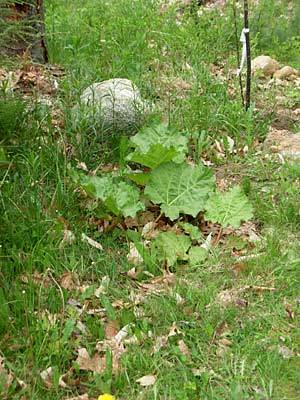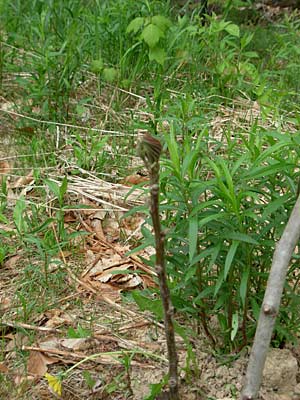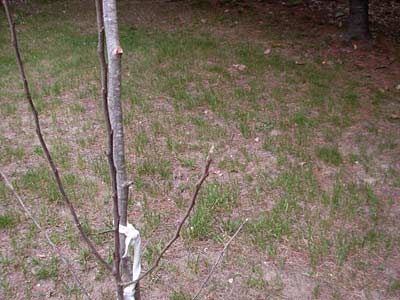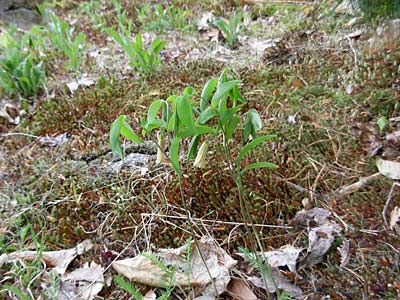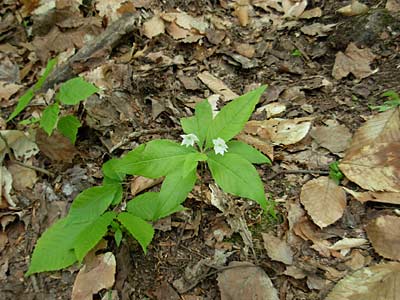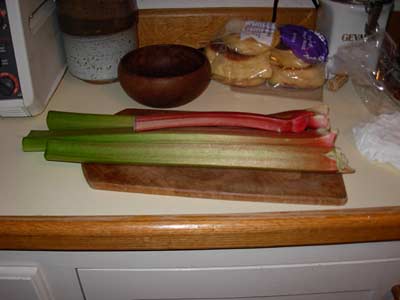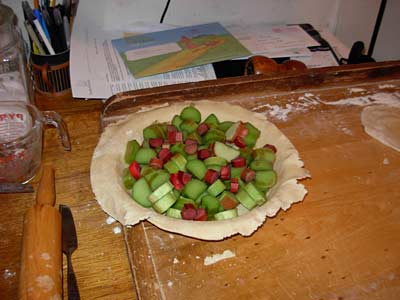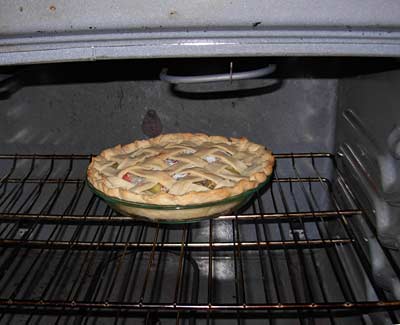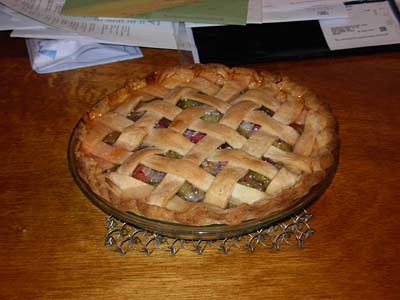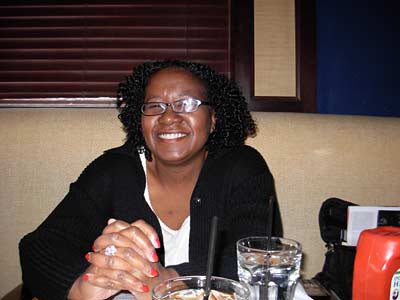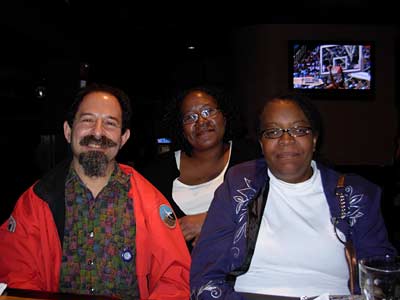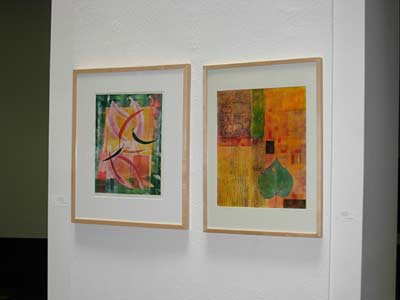We went to the Maine Fiber Frolic last weekend. We had skipped it last year, but I wanted to go again. Two years ago it was a cold day, I think even drizzly. This year was warmer and overcast with a prediction of clearing. There were many more people than last time.
This time I was as interested in the woodworking aspect as in the yarn itself. One of the vendors confirmed that — he said something like “there are lots of things fiber people use that I can make as a woodturner.” Right! Between spindles, nostepindes, niddy noddies, crochet hooks, and even knitting needles, there was lots of woodturnery on display. I got to talk with at least two turners and pick up some tips, as well as seeing inspiring work. I had a long talk with a woman who was selling gorgeous crochet hooks and knitting needles she had turned, and gave her the name of a place I’ve bought exotic wood dowels (all right, teak, it’s exotic because it doesn’t grow in the US) from that she wasn’t aware of. She told me about how she turns the knitting needles, using something called a spindle rest which supports the wood while it’s turning, and how carefully she has to measure the wood all the way along the needle to keep the diameter uniform. It’s like drawing a straight line — people say they can’t draw a straight line as though it’s the simplest possible thing to do, but if you try to draw one and then compare against a ruler you see that it’s a lot easier to draw a graceful curve than an accurate straight line. She says that because of having to carve the hook in a crochet hook by hand it takes about as long to make one crochet hook as a pair of knitting needles.
Here’s a little exhibit showing some steps in making a spindle shaft:
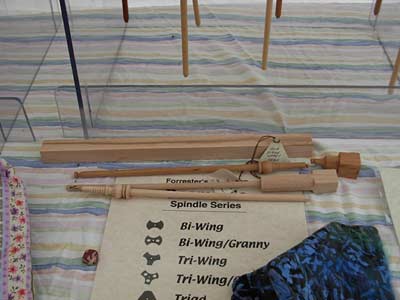
… and the display of amazingly gorgeous finished spindles by the same guy. These are Forrester spindles. I think they were at the A Touch of Twist booth.
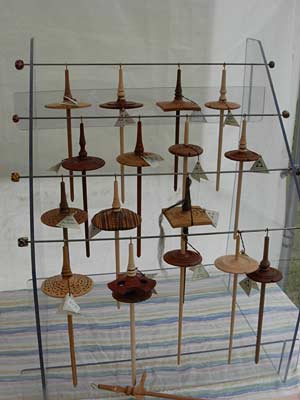
Arlene got a kit to make four needle-felted birds. We haven’t done needle felting before, so it’s going to be an adventure for both of us. I got one skein of worsted weight yarn in greens and browns, thinking just a camo colored watch cap, and enough Bartlett fisherman two-ply to make the Aran sweater in Knitting With Balls. I felt a little bad buying from the Bartlett booth instead of an LYS, but they’re a Maine business and a smallish supplier compared with Cascade or Berrocco. And really, I didn’t see that much appropriate for that sweater at the individual farm booths.
The Maine Llama Drill Team was performing in the afternoon. Since we knew what to expect we weren’t laughing as hard as we had been the other time we saw it, but it was still lots of fun. This woman was still studying the script for the routines. She was a last minute sub because her friend (or sister?) was home helping birth some lambs.
